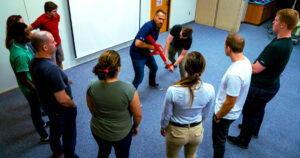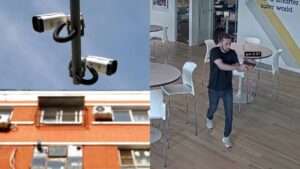
Detect and Avoid Strategies in Acitve Shooter Training
The increasing frequency of active shooter incidents has necessitated the development of comprehensive training programs aimed at preparing individuals for such unfortunate events. This paper focuses on the “Detect and Avoid” strategies that are integral to active shooter training. These strategies are designed to empower individuals with the skills and knowledge needed to identify potential threats and take immediate action to avoid harm. The paper explores these strategies’ psychological, tactical, and situational aspects, offering insights into their effectiveness and areas for improvement.
Active shooter incidents are unpredictable and evolve quickly. Law enforcement may often not arrive on the scene for several minutes. It is, therefore, crucial for individuals to be prepared to deal with such situations. One of the key elements in active shooter training is the “Detect and Avoid” strategy, which aims to equip individuals with the skills to recognize a potential threat and take immediate action to evade it.

left, Yvonne Feliciano, an Amherst Police Officer, role plays a victim with others as an “active Shooter” enters a room during an ALICE (Alert, Lockdown, Inform, Counter, Evacuate) active shooter training session. In this scenario the “victims” were instructed to not respond in the traditional “duck and Cover” but to distract the shooter by throwing objects, yelling and moving. The session was held at Amherst Regional Middle School.




Psychological Aspects
Situational Awareness
Situational awareness is the cornerstone of the “Detect and Avoid” strategy. It involves being aware of one’s environment, understanding the context, and making quick decisions based on the available information. Training programs often use simulated scenarios to help individuals develop heightened awareness.
Stress Management
High-stress situations can impair cognitive functions, making it difficult to think clearly and make rational decisions. Active shooter training includes stress management techniques such as deep-breathing exercises and mental rehearsals to help individuals maintain composure during an incident.
Tactical Aspects
Early Detection
The sooner a threat is detected, the more time there is to take evasive action. Training programs teach individuals to recognize the signs of a potential active shooter, such as erratic behavior, verbal threats, or weapon presence.
Evasion Techniques
Once a threat is detected, the next step is to avoid it. This could involve running away from the threat, taking cover, or hiding. Training programs often include drills that simulate various scenarios, teaching individuals the most effective evasion techniques for each situation
Situational Aspects
Environmental Factors
The effectiveness of “Detect and Avoid” strategies can be influenced by environmental factors such as lighting, noise levels, and crowd density. Training programs should, therefore, include exercises that simulate different environmental conditions.
Communication
In an active shooter situation, communication is vital. Individuals must be trained to quickly and clearly communicate the threat’s nature to others and coordinate actions. This could involve verbal communication, hand signals, or even text messages.
Conclusion
The “Detect and Avoid” strategies in active shooter training are designed to empower individuals with the skills and knowledge needed to identify potential threats and take immediate action to avoid harm. While no strategy can guarantee complete safety, these techniques offer a proactive approach to enhancing personal security. Ongoing research and development in this area are essential for refining these strategies and adapting them to new types of threats.
Recommendations
1. Incorporate real-world scenarios into training programs to improve situational awareness.
2. Include stress management techniques as a standard part of the curriculum.
3. Update training materials regularly to reflect the latest research and best practices in the field.
By focusing on the “Detect and Avoid” strategies, active shooter training programs can provide individuals with the tools they need to protect themselves and others in the face of an unimaginable threat.
www.smartsecuresafe.com
www.floridaactiveshootertraining.com
